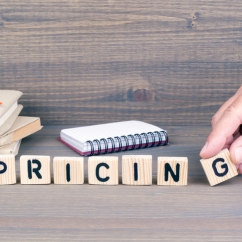Sales Strategy
How Retailers Can Benefit by Implementing Dynamic Pricing Strategies May 13, 2024 (0 comments)

Concord, CA--Dynamic pricing, also known as variable pricing, fine-tunes product prices in real-time according to market conditions and consumer demand, optimizing profit margins while keeping prices competitive.
[Image via tumsasedgars/istock.com]
An article by Revel Systems provides a detailed guide for retailers interested in adopting this strategy.
How Dynamic Pricing Works
Dynamic pricing uses big data, algorithms, and artificial intelligence to adjust prices based on customer traffic, competitor pricing, and inventory levels.
The article highlights that implementing dynamic pricing can increase sales revenue by up to 30%, citing research published in The Consumer Goods Forum.
Types of Dynamic Pricing in Retail
As highlighted in the article, retailers can use various dynamic pricing strategies:
- Time-Based Pricing: Temporarily reduces prices to create purchase urgency.
- Segmented Pricing: Sets prices for different customer segments based on demographics or location.
- Peak Pricing: Increases prices during high-demand periods to maximize revenue.
- Price Skimming: High prices for new products are initially charged, then lowered to attract more customers.
- Bundle Pricing: Offers products together at a lower combined price.
- Penetration Pricing: Starts with low prices to build market share, then increases them.
- Cost-Plus Pricing: Adds a fixed profit margin to the cost of products.
- Competitive Pricing: Adjusts prices based on competitors to remain competitive without reducing margins.
- Value-Based Pricing: Sets prices based on perceived customer value.
Pros and Cons of Dynamic Pricing
Pros:
- Adjusts prices to market demand in real time.
- Stays competitive with flexible pricing strategies.
- Gains insights into market dynamics and consumer behavior.
Cons:
- Frequent changes can frustrate customers.
- Requires sophisticated technology and data analysis.
- Raises ethical and legal concerns in certain industries.
Implementing Dynamic Pricing
The article adds that retailers should focus on the total out-the-door price, including taxes and fees, and understand the pricing expectations for different products to maintain stability. Implementing dynamic pricing requires continuous testing and refinement based on consumer feedback and market conditions.
Integrating inventory management systems can also be helpful. These systems provide real-time stock level insights, enabling timely pricing adjustments and maintaining optimal stock levels with features like low-stock alerts and automated reordering.
Check out the entire article by Revel Systems for more details.






